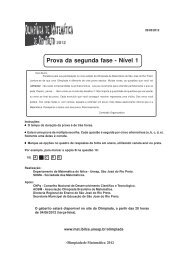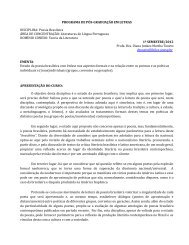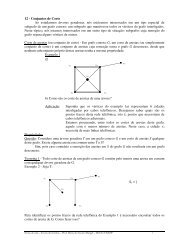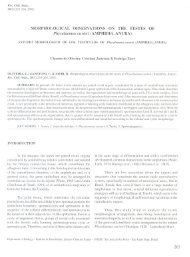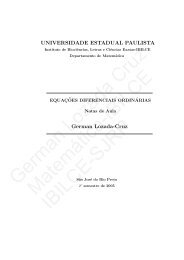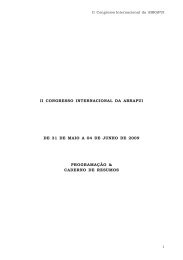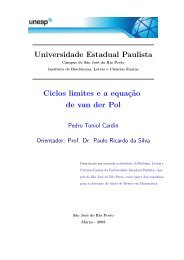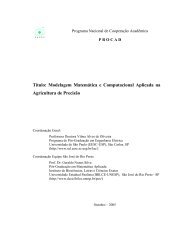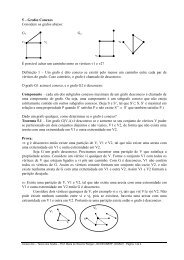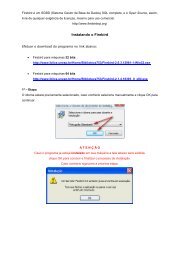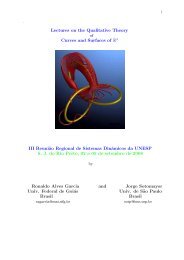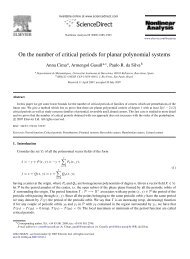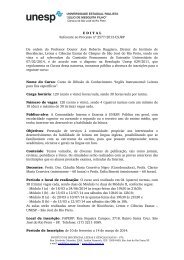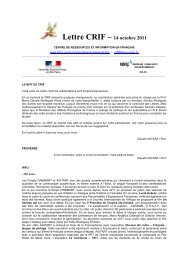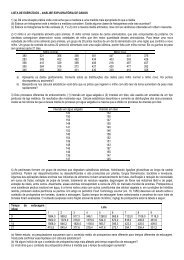Curso de Equações Diferenciais Ordinárias - Unesp
Curso de Equações Diferenciais Ordinárias - Unesp
Curso de Equações Diferenciais Ordinárias - Unesp
Create successful ePaper yourself
Turn your PDF publications into a flip-book with our unique Google optimized e-Paper software.
sobre eventuais problemas em t = 1. De qualquer forma o teorema verifica-se, já<br />
que ele garante apenas que existe uma única função <strong>de</strong>finida em uma vizinhança<br />
<strong>de</strong> t 0 = 0 que é solução do PVI.<br />
O Método <strong>de</strong> Picard e uma idéia da prova do Teorema<br />
Para simplificar a apresentação, consi<strong>de</strong>remos o caso particular<br />
{ y ′ = f (t, y)<br />
e f e ∂f<br />
∂y contínuas em R :<br />
y (0) = 0<br />
−a ≤ t ≤ a<br />
−b ≤ y ≤ b<br />
A prova baseia-se no MÉTODO DAS APROXIMAÇÕES SUCESSIVAS (<br />
Método <strong>de</strong> Picard).<br />
Inicialmente observemos que se φ é uma solução do PVI então temos<br />
∫ t<br />
0<br />
φ ′ (s) = f (s, φ (s))<br />
φ ′ (s) ds =<br />
φ (t) − φ (0) =<br />
φ (t) =<br />
∫ t<br />
0<br />
∫ t<br />
0<br />
∫ t<br />
0<br />
f (s, φ (s)) ds<br />
f (s, φ (s)) ds<br />
f (s, φ (s)) ds<br />
Consi<strong>de</strong>remos uma sequência <strong>de</strong> funções dada por<br />
φ 0 (t) = 0<br />
φ 1 (t) =<br />
φ 2 (t) =<br />
φ n (t) =<br />
∫ t<br />
0<br />
∫ t<br />
0<br />
∫ t<br />
.......<br />
0<br />
f (s, φ 0 (s)) ds<br />
f (s, φ 1 (s)) ds<br />
f (s, φ n−1 (s)) ds<br />
Se a seqũencia for convergente então a função limite será uma solução. Para<br />
resolvermos tal problema <strong>de</strong>vemos antes <strong>de</strong> mais nada verificarmos se φ n está<br />
bem <strong>de</strong>finida.<br />
27



